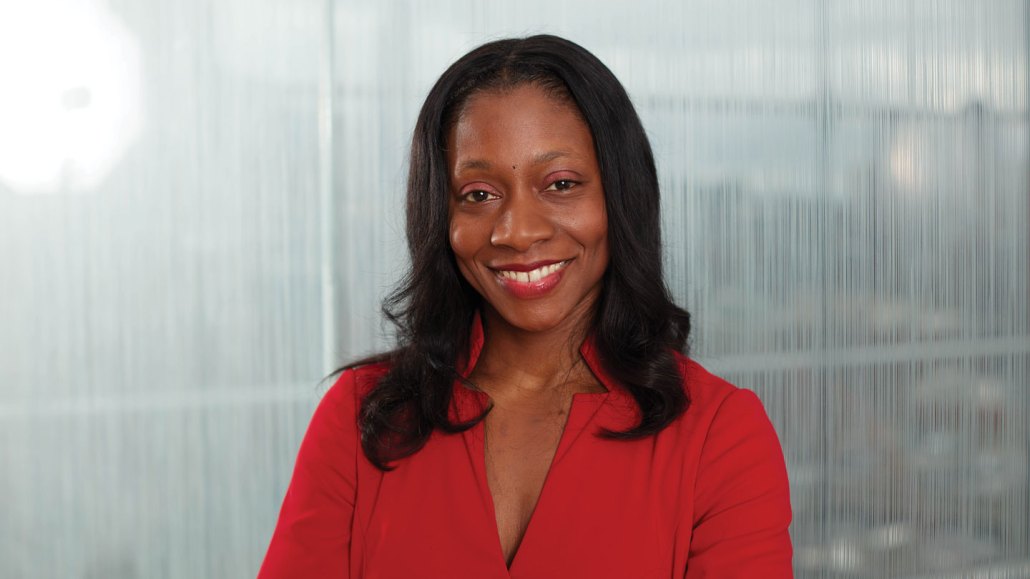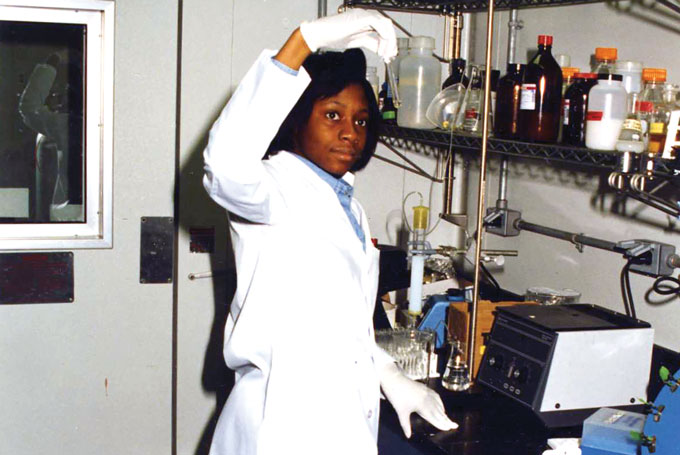Conversations with Maya: Fatima Cody Stanford

Fatima Cody Stanford, Obesity medicine physician-scientist, educator and policy maker at Massachusetts General Hospital and Harvard Medical School
Maya Ajmera, President & CEO of the Society for Science and Executive Publisher of Science News, chatted with Fatima Cody Stanford, an obesity medicine physician-scientist, educator and policy maker at Massachusetts General Hospital and Harvard Medical School. As an expert in obesity medicine, she works at the intersection of medicine, public health, policy and disparities. She is also an alumna of the 1995 International Science and Engineering Fair (ISEF), a competition owned and produced by Society for Science.
How did ISEF influence you?
ISEF was pivotal in shaping who I am as a physician-scientist. When you start as early as I did and are taken seriously as a young person through your participation in a program like ISEF, you build up confidence. That gives young people a mental framework of how to proceed in science. You feel like you can do this.
Where did you grow up?
I was born and raised in Atlanta, and I am a product of the Atlanta public school system. I went to Benjamin E. Mays High School, which had a math and science academy that I attended. As part of the program, I spent whole summers doing science projects. I worked in the Rollins Research Center at Emory University with a scientist named Dale Edmondson, and I received funding from the National Institutes of Health for the work. I didn’t understand how outstanding that was at the time.
The experience of working in a productive lab at that age helped me gain independence. The Ph.D.s and postdocs there didn’t have much time to spend with a high schooler, so I learned how to navigate the space independently.

You are one of the first fellowship-trained obesity medicine physicians worldwide and one of the most highly cited obesity medicine physician-scientists, with more than 190 peer-reviewed publications. What drew you to this field?
I thought I would be an orthopedic surgeon. But the universe had different ideas. When I was completing my master’s in public health from Emory in the late ’90s and early 2000’s, much of my work was in obesity. I came to learn that I didn’t understand obesity. I told my patients to eat less and exercise more, but nothing would change. I thought, “There must be something more to this story.”
That said, my path to obesity research was circuitous. After receiving my MPH, I attended the Medical College of Georgia School of Medicine and did my residency in internal medicine and pediatrics at the University of South Carolina School of Medicine. I was trying to figure out what I wanted to do with my life.
I remember being on call in the pediatric ICU in the middle of the night. I had just intubated a child, meaning I wasn’t going to sleep. I sat at the nurses station and Googled obesity and medicine, and a fellowship at Harvard University popped up. I got excited and called my husband — even though it was about 2:30 a.m.
A few years later, I was a second year resident at the University of South Carolina Medical School and had an “aha” moment. I realized that we have tools to treat patients with obesity. I wasn’t thinking about the biology because no one ever taught me the biology. I questioned: “Why are we not studying this?” I asked why we weren’t analyzing patient data and working with other institutions. And that was really what launched me into researching the clinical implications of obesity.
In your writing and lectures, you have clarified the distinction between the words “obesity,” which is a disease, and “obese,” which is often deployed as a stigmatizing label. Can you talk about the importance of overcoming stigma for your patients?
I think stigma is more pervasive in obesity than in any other area of medicine. Obesity is a disease you wear, and with this visibility comes judgment. It’s heartbreaking to hear the stories of what my patients go through in their daily lives.
Even more hurtful is that we, as physicians and health care providers, also have significant biases toward patients. This bias starts so early in life that by the time someone is in medical school, they have set, distinct beliefs. It’s highly problematic and pervasive. It affects our compassion — or lack thereof — for patients because we make judgments without taking the time to understand that the patient is human and that this is a treatable disease.
What is your obesity research specifically about?
I’ll say it’s multifactorial. Some of my work looks at the impact of metabolic and bariatric surgery on cardiometabolic outcomes in children and adults. Some of my research looks at pharmacotherapy and some of it looks at issues surrounding BMI. My research speaks to my diverse interests. I love clinical work, but health policy is essential. Obesity is too big an issue to compartmentalize into one area. It would be best to look at the policy implications through the public health lens.
What factors do you consider in the treatment of obesity?
One of the first things I do about treatment is look at a patient’s insurer because that will dictate what therapies are available. Instead of treating the patient with the best tool, I must use their insurance to guide our actions. For example, if you are a Medicare patient and want to meet with a dietitian because you have obesity and wish to refine your diet, the visit would not be covered. But if you have diabetes, the visit would be covered. We disagree with that as a strategy. It’s problematic that we must wait for patients to get diabetes or a cardiac-equivalent disease to get coverage for treatments that prevent these things.
As a woman in STEM, you have achieved so much at such a young age. You are considered a trailblazer. What sort of challenges have you faced?
I wrote a piece for the Lancet a few years ago that speaks to the fact that I must do 10 times more than my peers to be recognized. My current CV is 198 pages, which seems bewildering to people, but I always feel like it’s not enough. People will tell me that I need to do more of this, or that I’m not quite ready for that. Regardless of my climb, someone will challenge my value or worth.
I think a lot of that is because I am a Black woman in STEM who’s very outspoken and willing to raise my voice. People want to identify you as domineering or too aggressive in situations where the behavior would be appropriate for someone else.
Here is one example of a challenge I faced. In medical school, I ran for president of my class. After being elected president, I learned that at one point in the school’s history, the Medical College of Georgia’s Anatomy and Physiology Department purchased an enslaved person, Grandison Harris, to rob Black grave sites so that anatomy classes could study the bodies. I brought the issue back to my fellow class officers and recommended acknowledging Harris and his contributions. Many fellow officers disagreed and thought I was bringing up dirty laundry.
When I used my executive privilege as president to acknowledge him, I had things thrown at me in class. An anonymous newsletter was published about my Black features. It went out to the faculty, students and staff. When I think that these people are now practicing physicians around the country, I wonder how they treat their patients. They are people that I would never want my family or friends ever to see.
There are many challenges facing our world today. What’s keeping you up at night?
Obesity is something that I think about a lot. It’s such a significant disease. There’s so much I must think about and so many areas I must approach. I also think a lot about the inequities in our society: The recent U.S. Supreme Court decision to eliminate affirmative action in colleges and universities is something I wrote and published about in the Proceedings of the National Academy of Sciences in April. The decision is erecting more barriers to those from underrepresented backgrounds or those with lower socioeconomic status. It is quite worrisome to me. I think about all the hoops I’ve had to jump through and recognize that those coming after me may have an even more difficult time — precisely the opposite of what I’m trying to accomplish.